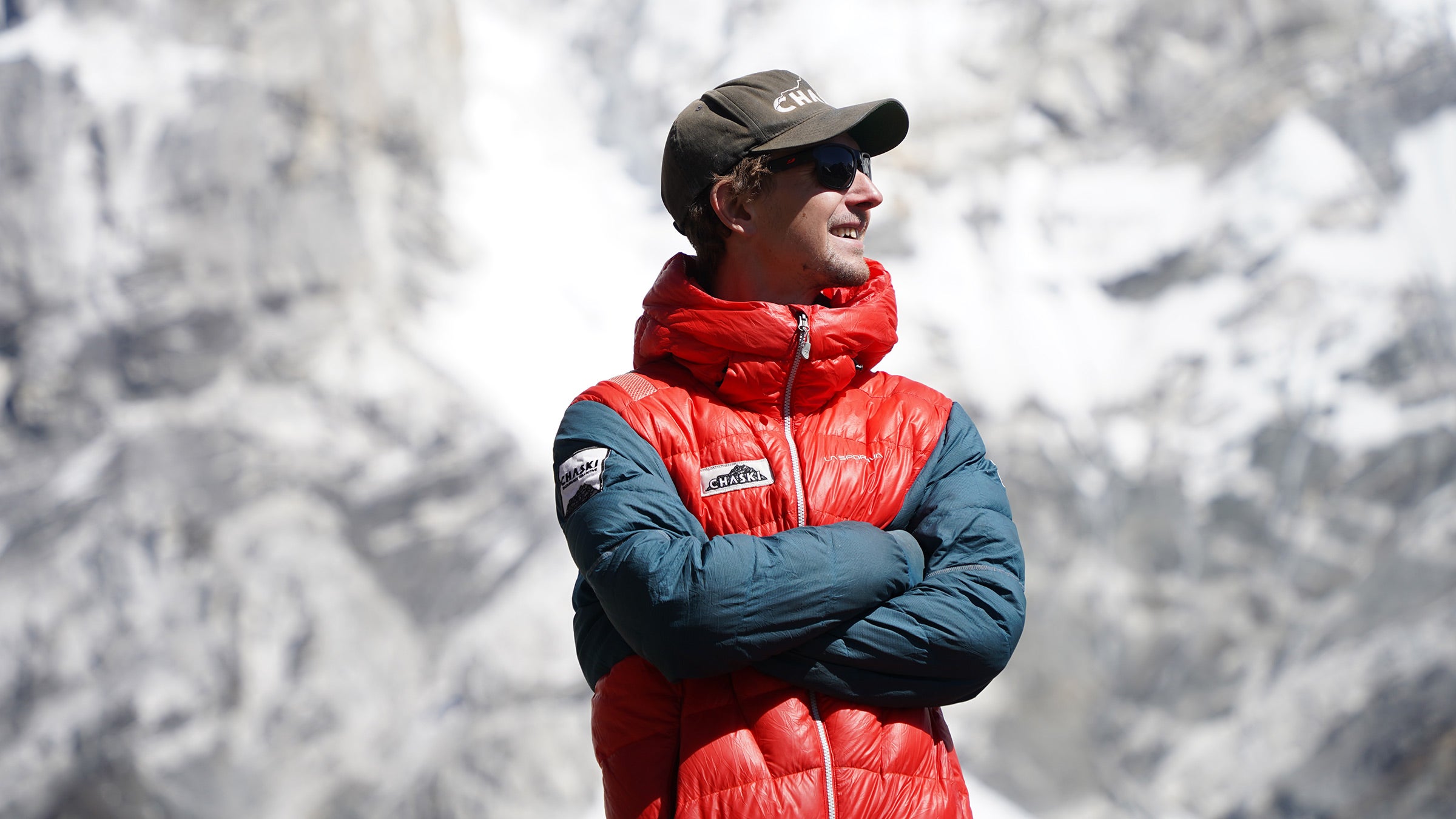Tyler Andrews Will Attempt the Everest FKT This Fall. The Odds Are Against Him.

(Photo: Chris Fisher)
American ultrarunner Tyler Andrews will return to Nepal this September to chase the record for the fastest ascent of Mount Everest without supplemental oxygen. Andrews, 35, is heading back to the peak after mounting three separate attempts to set the FKT during the spring climbing season.
The current Fastest Known Time for such a climb is 20 hours and 24 minutes, set by Nepali climber Kaji Sherpa in 1998.
Andrews told Outside that he had to perform a “hard reset” on his goal after his springtime expedition came up short. He spent nearly two months in Nepal, and his three attempts were captured by a documentary film crew.
“I was so cooked.” Andrews told Outside from his home in Ecuador, where he is now training for his next attempt. “I had to go back to square one and be patient.”
Andrews made his first attempt on May 10. He set a blistering pace through the Khumbu Icefall and up the Western Cwm, and appeared to be on track to break the record. But when he reached Camp III, Andrews changed from running shoes into heavy boots. While pulling on one of the boots, the zipper broke. He tried to fix the boot, but ultimately turned back after his foot became cold and wet.
Andrews made a second bid on May 23, but bad weather forced him to use supplemental oxygen for safety. Three days later, on May 26, he made a third and final push, hoping to seize a late weather window. But the physical efforts of the two earlier attempts caught up with him, and Andrews turned back just 1,400 feet below the summit after he was overcome by exhaustion.
“When you’re trying to do really cutting edge, tip of the spear stuff in athletics, there’s a reason that it’s really hard,” he said. “I think I was capable of it, and I was confident—but at the end of the day there were a lot of factors that were mostly outside of my control. It was a roll of the dice.”
Most climbers have the resources and stamina for just one Everest attempt per season. Andrews’ drive was fueled in part by competition from Swiss-Ecuadorian athlete Karl Egloff, who was pursuing the same record from an adjacent camp. Having his attempt be the focal point of an upcoming film provided added motivation as well.
When Andrews left Nepal at the end of May, he expected to wait a full year before trying again. But then his outfitter, Asian Trekking, told him about a handful of expeditions planned for the fall.
“If I had to wait until May? Oh my God. I would just be eating myself for nine months,” Andrews said. “As soon as [expedition leader ] Dawa Steven told me, ‘There’s a possibility this could happen in the fall,’ I was like, let’s go figure out how to make it happen.”
Everest climbing typically occurs in the spring, when the weather is more stable and infrastructure on the mountain is at its peak. Successful climbs in the fall are far less common.
Heavy snow from the summer monsoon and volatile jetstream winds leave a narrow window to reach the top. The danger of avalanches is far greater in the fall.
According to the Himalayan Database, an online directory of mountaineering accolades in Nepal, the most recent Everest climb in the fall occurred in 2010 when American climber and polar explorer Eric Larsen scaled it.
“We have rain and snow up high until mid-September, and then the jet stream hits the summit in mid-October.” Billi Bierling, Director of the Himalayan Database, told Outside. “So you get a shorter season, more snow, less infrastructure and colder weather with high winds.”
Andrews isn’t deterred by the tougher fall conditions. He believes that the extra snow could make the route safer by reducing rockfall. “Some things are harder and some are easier,” he said. “We’re looking at the Karakoram right now—it’s unbelievably dry, and dangerous because of the weather.”
Andrews may enjoy another advantage in the fall when compared to the spring: fewer people on the mountain. In the spring, hundreds of inexperienced climbers clog the route on days with the best weather. At numerous points in the climb, impassible conga lines form as the climbers navigate difficult sections.
Andrews had to avoid these crowds in the spring. But in the fall, the route to the top will be mostly clear of other climbers.
The two other expeditions on the mountain this fall will help with the enormous job of fixing ropes and blazing a trail through the dangerous Khumbu Icefall and onward to the summit.
This time, Andrews plans to simplify his ascent. In the spring, he had helpers and guides supporting his attempts. But in the fall, he will attempt it solo.
“The approach that I’m taking this year is to climb solo and self-supported,” he said. “I need to treat this like a backpacking trip as opposed to an ultra marathon… It might be a little bit slower, but it removes complexity. My big takeaway from the spring was just that complexity is a killer.”
When he arrives in Nepal in late September, Andrews will head to the small settlement of Khare at the base of the 21,200-foot Mera Peak. There, he will set up his hypoxic breathing system and stationary bike, and fall into a familiar routine of running laps up and down the mountain until a weather window opens on Everest.
When the day comes, he’ll take a helicopter to Mount Everest Base Camp and begin his sprint up the world’s highest peak. Asked if he’s considered what happens if he fails again, Andrews doesn’t hesitate:
“I haven’t really thought about it, to be honest.” he said. “I am 100 percent sure that I’m capable of doing this thing.”